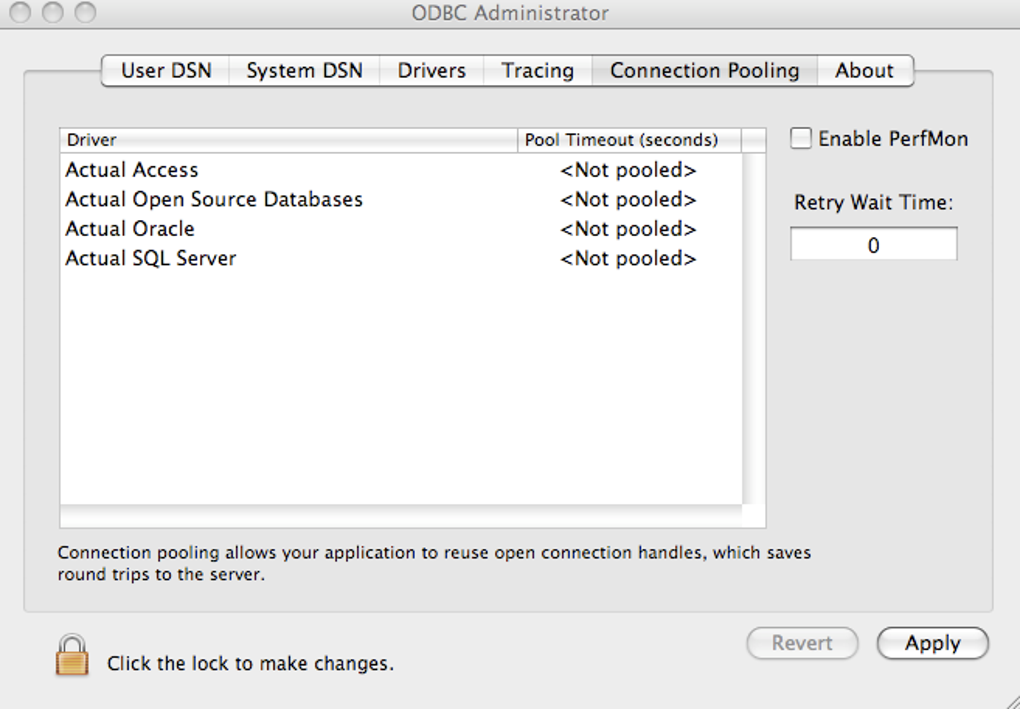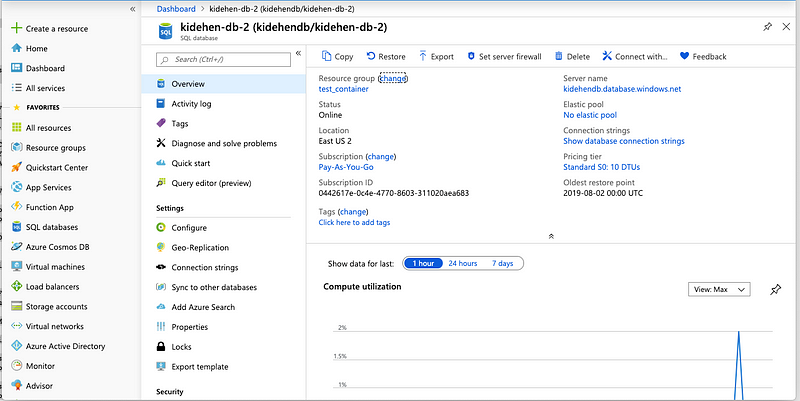Similar to Windows, macOS utilizes named data sources (DSNs) for connecting ODBC-based client applications to Snowflake.
In this Topic:
Prerequisites¶

Mar 06, 2020 Microsoft® ODBC Driver 17 for SQL Server® - Windows, Linux, & macOS Important! Selecting a language below will dynamically change the complete page content to that language. ODBC Manager is a replacement for Apple's ODBC administrator utility, which is no longer included with Mac OS X (starting with Snow Leopard). ODBC Manager also addresses some of the problems.
Operating System¶

For a list of the operating systems supported by Snowflake clients, see Operating System Support.
iODBC¶
The Snowflake ODBC driver for Mac requires iODBC, which is available for download from:
To install iODBC:
After downloading iODBC, double-click on the downloaded .dmg file.
Double-click on the installer file,
iODBC-SDK.pkg, and follow the prompts.
Note
iODBC provides a GUI administrator tool for configuring drivers and DSNs; however, this tool has not been tested for use with Snowflake and, therefore, should not be used to create or manage DSNs. Use ODBC Manager instead.
ODBC Manager — Optional/Recommended¶
ODBC Manager is a GUI tool for configuring drivers and creating/managing DSNs. The tool is optional because you can also create DSNs manually by editing the appropriate odbc.ini file. ODBC Manager is available from:
To install ODBC Manager:
After downloading ODBC Manager, double-click on the downloaded .dmg file.
Double-click on the installer file,
ODBCManager.pkg, and follow the prompts.
The installer installs ODBC Manager in the ~/Applications/Utilities directory.
Step 1: Install the ODBC Driver¶
To install the Snowflake ODBC driver for macOS:
If you haven’t already downloaded the driver, download it now. For details, see Downloading the ODBC Driver.
Double-click on the downloaded .dmg file,
snowflake_odbc_mac-<version>.dmg.Double-click on the installer file,
snowflakeODBC_<version>.pkg, and follow the prompts.You will likely be prompted for the administrator/sudo password for the machine on which you are installing the driver.
If you choose the default directory when prompted, the installer installs the ODBC driver files in the following directories:
Step 2: Configure the ODBC Driver¶
To configure the ODBC driver for macOS, create one or more data source (DSNs), which are stored in the following files, depending on the type of DSN you create:
User DSNs:
~/Library/ODBC/odbc.iniSystem DSNs:
/Library/ODBC/odbc.ini
To create a DSN, either use ODBC Manager or edit the appropriate odbc.ini file.
Creating a DSN Using ODBC Manager¶
To create a DSN in ODBC Manager:
Start ODBC Manager.
Click on User DSN or System DSN.
Click the Add button.
Select the driver to use (Snowflake) and click OK.
Enter the name of the DSN and optionally a description.
Create a Keyword/Value pair for each DSN parameter:
Click Add to create a Keyword/Value pair.
Select Keyword and replace it with the parameter name.
Select Value and replace it with the value for the parameter.
Repeat this process for each parameter. For details about the parameters that can be set for each DSN, see ODBC Configuration and Connection Parameters.
Click OK to create the DSN.
If you are creating the first user or system DSN for the ODBC driver, ODBC Manager creates the odbc.ini file in the corresponding directory for the type of DSN you are creating. If you are creating additional DSNs, ODBC Manageradds entries for each DSN to the existing odbc.ini file.
Creating a DSN by Adding an Entry in the odbc.ini File¶

If a user or system DSN has already been created for the driver, add the new entry to the odbc.ini file that already exists in the corresponding directory for the type of DSN you are creating. If you are creating the first DSNfor the driver, you must manually create the odbc.ini file and add the entry to the file.

For each DSN, specify:
DSN name and driver name (Snowflake), in the form of
<dsn_name>=<driver_name>.Directory path and name of the driver file, in the form of
Driver=/opt/snowflake/snowflakeodbc/lib/universal/libSnowflake.dylib.Connection parameters, such as
serveranduid(user login name). Any connection parameters you add to the DSN do not need to be specified in the ODBC connect string.Any additional parameters, such as default
role,database, andwarehouse.
Parameters are specified in the form of <parameter_name>=<value>. For details about the parameters that can be set for each DSN, see ODBC Configuration and Connection Parameters.
The following example illustrates an odbc.ini file containing two drivers, testodbc1 for account xy12345 (located in the AWS US West region) and testodbc2 for account yz23456(located in the AWS US East region):
Note the following:
Both
testodbc1andtestodbc2have default roles.testodbc2also has a default database and warehouse.
Step 3: Test the ODBC Driver¶
You can use the iodbctest command line utility provided with iODBC to test the DSNs you create.
When prompted for the ODBC connect string, enter the required connection parameters (DSN name, server, user login name, and password), as well as any other parameters that you would like to enter as part of the connect string. Theconnect string takes parameters in the form of <parameter_name>=<value>, e.g. dsn=testodbc2, with each parameter separated by a semi-colon (;) and no blank spaces. For the list of supported parameters, seeODBC Configuration and Connection Parameters.
Note
If you set the server and user login name in the DSN, the only required parameters in the connect string are the DSN name and user password.
Odbc Driver Manager Download
For example:
